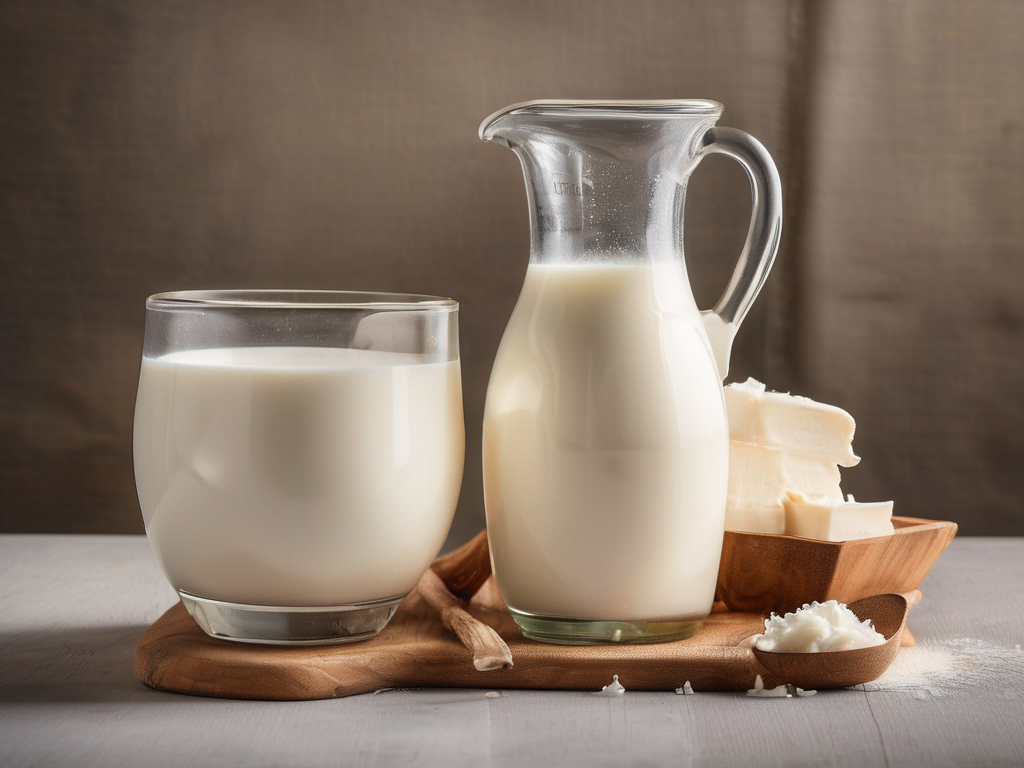
Is Your Goat Milk Still Good: Signs of Spoilage
Get Your Free Food Safety Cheat Sheet
30 most common foods with instant answers. Print it and stick it on your fridge—completely free!
Is Your Goat Milk Still Good: Signs of Spoilage
When it comes to dairy products, ensuring freshness and quality is crucial for both taste and health reasons. Goat milk, known for its unique flavor and nutritional benefits, is no exception. As a goat milk enthusiast, it's important to be able to tell if your goat milk has gone bad to prevent any potential health risks. In this blog post, we'll explore the signs of spoilage in goat milk and provide you with practical tips on how to keep it fresh for longer. (Goat milk)
Understanding the Shelf Life of Goat Milk
Before we delve into the signs of spoilage, it's essential to understand the typical shelf life of goat milk. Fresh goat milk, when stored properly, can last anywhere from 7 to 10 days in the refrigerator. However, various factors such as temperature, storage conditions, and contamination can affect its longevity. By being aware of these factors, you can better assess the freshness of your goat milk.
Factors that Influence the Shelf Life of Goat Milk:
- Temperature: Storing goat milk at the optimal temperature of 38-40°F (3-4°C) can help extend its shelf life.
- Light Exposure: Keep goat milk in opaque containers to prevent light exposure, which can lead to faster spoilage.
- Contamination: Ensure proper hygiene practices when handling goat milk to prevent contamination by harmful bacteria.
Signs that Your Goat Milk Has Gone Bad
Now, let's explore the telltale signs that indicate your goat milk has spoiled and is no longer safe for consumption.
Visual Clues:
- Chunky Texture: If you notice lumps or chunks in your goat milk, it's a clear sign of spoilage.
- Discoloration: Any changes in color, such as yellowing or browning, indicate that the milk has gone bad.
- Mold Growth: Visible mold on the surface of the milk is a definite sign of spoilage.
Olfactory Cues:
- Off Odor: Spoiled goat milk will emit a sour or rancid smell, signaling that it's no longer fresh.
- Unpleasant Aroma: If the milk smells unpleasant or different from its usual mild scent, it's best to discard it.
Taste Test:
- Sour Taste: Spoiled goat milk will have a tangy, sour taste that is distinctly different from its fresh counterpart.
Tips for Extending the Shelf Life of Goat Milk
To maximize the freshness and quality of your goat milk, consider the following tips for proper storage and handling:
- Refrigerate Promptly: As soon as you bring home fresh goat milk, refrigerate it immediately to slow down bacterial growth.
- Store Properly: Keep goat milk in a sealed container in the coldest part of the refrigerator to maintain its freshness.
- Avoid Temperature Fluctuations: Minimize temperature fluctuations by not leaving the milk out at room temperature for extended periods.
- Check Expiration Date: Always check the expiration date on the packaging and consume the milk before it expires.
Conclusion
In conclusion, being able to recognize the signs of spoilage in goat milk is essential for ensuring your dairy products are safe to consume. By following proper storage guidelines, practicing good hygiene, and being vigilant for any visual, olfactory, or taste abnormalities, you can enjoy fresh and delicious goat milk without the risk of contamination. Remember, when in doubt, it's always best to err on the side of caution and discard any goat milk that shows signs of spoilage. By prioritizing food safety and quality, you can savor the goodness of goat milk with peace of mind.
For more information on [goat milk](/food/goat milk) and food safety tips, stay tuned for our upcoming blog posts! (Goat milk)
Authoritative Food Safety References
These agencies and university labs inform every tip and health precaution we publish.
USDA FoodKeeper – Cold Storage Guidelines
Official refrigerator, freezer, and pantry timelines maintained by the U.S. Department of Agriculture.
Visit USDA FoodKeeperFDA Produce Safety Rule & Grower Guidance
Field-to-fridge handling practices that prevent contamination of fruits, vegetables, and leafy greens.
Visit FDA Produce SafetyCDC Foodborne Illness Prevention Hub
Surveillance-backed guidance on pathogens, symptoms, and steps to reduce foodborne illness risk.
Visit CDC Food SafetyUC Davis Postharvest Technology Center
University research detailing optimal storage atmospheres for produce after harvest.
Visit UC Davis PostharvestPenn State Extension – Home Food Preservation & Safety
Peer-reviewed extension bulletins on safe canning, chilling, and reheating practices.
Visit Penn State ExtensionGet Your Free Food Safety Cheat Sheet
30 most common foods with instant answers. Print it and stick it on your fridge—completely free! Want more? Upgrade to the complete guide with 70+ foods.
Scan your food directly and get instant safety info using our AI-powered camera feature.